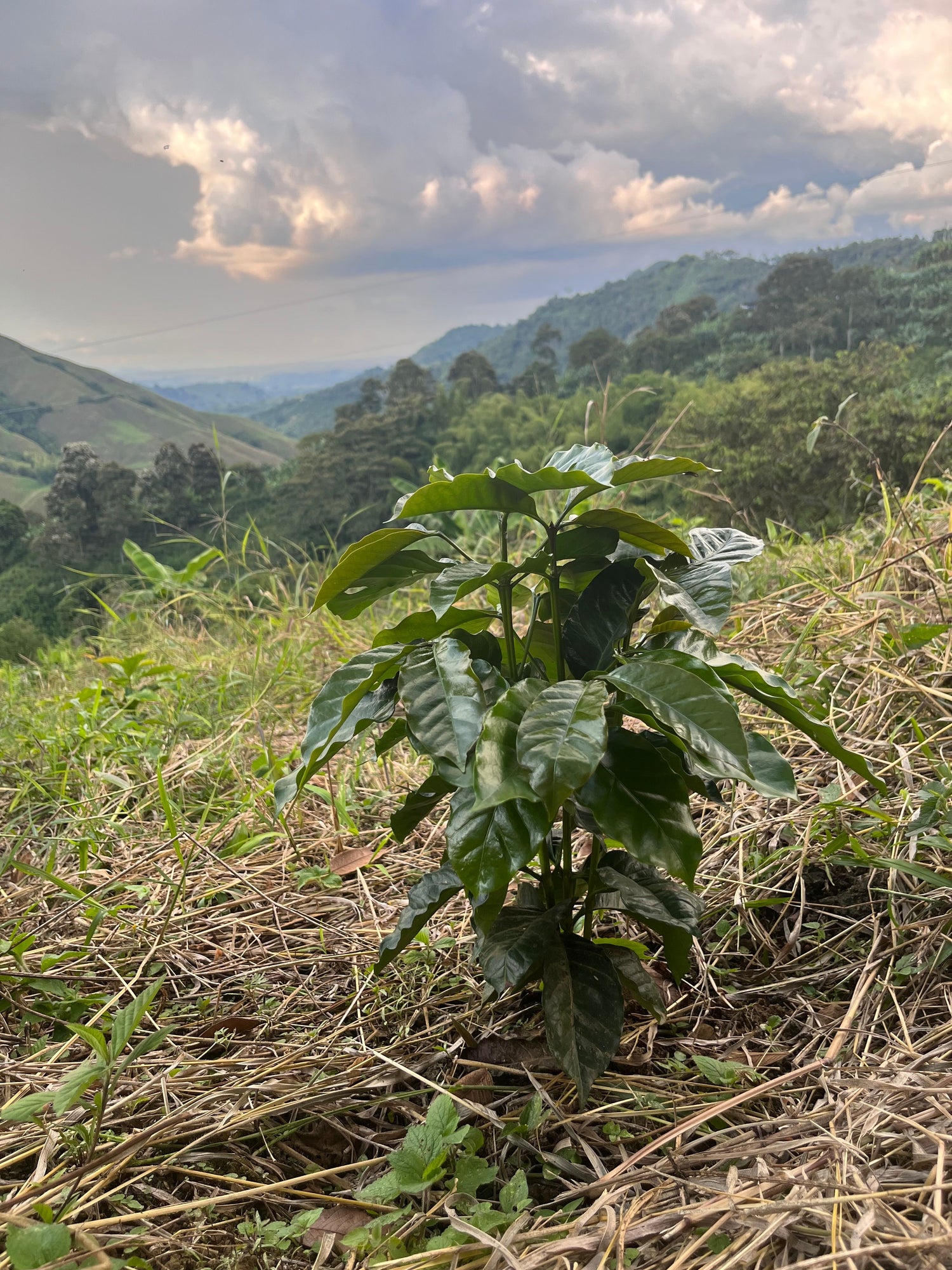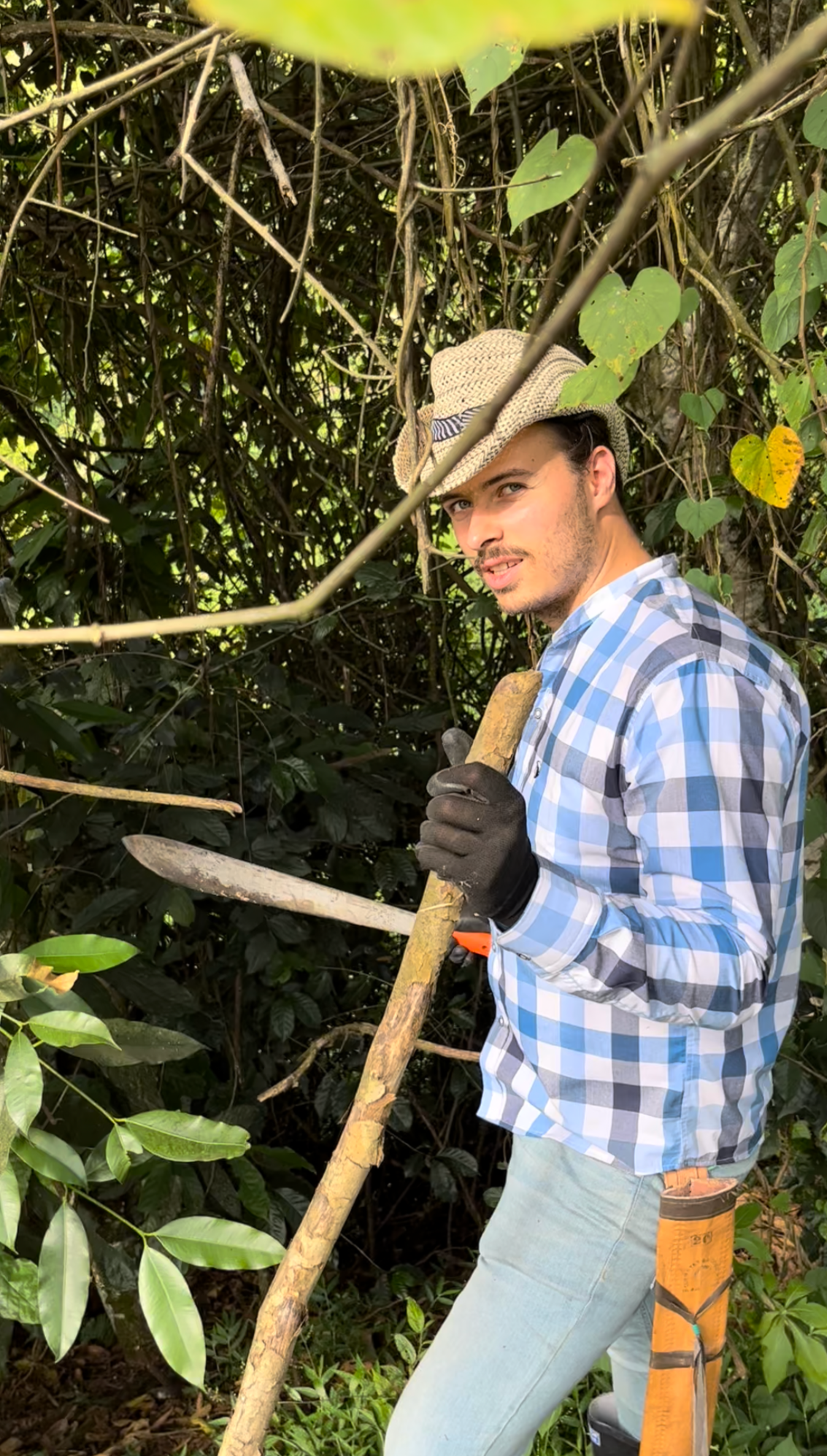The coffee triangle in Colombia, known locally as "eje-cafetero", is the most traditional coffee-growing region in Colombia and is often referred to as the "coffee zone of Colombia" or "coffee region of Colombia". The correct translation of Eje-cafetero, however, is coffee axis. The name comes from the fact that, despite its small size, a large part of Colombia's coffee production was achieved here in history. Nowadays, other regions have caught up, but today this small region still produces around 15% of Colombia's total production.
Where is the coffee zone in Colombia?
Colombia’s coffee zone is located in a triangle-like area between these major cities:
- Pereira
- Manizales
- Armenia
On the map you can see the coffee zone of Colombia framed in black:

That is why the coffee zone in Colombia is known as the Coffee Triangle. In the Coffee Triangle, climate and geography work together perfectly. There are many valleys and many peaks, the country is rich in natural springs, waterfalls, rivers and even thermal springs. And of course there are a lot of so-called fincas: the coffee plantations. Some of the most famous places are the Cocora Valley & the thermal springs of Santa Rosa:


The Cocora palm is the national tree of Colombia. It grows up to 60 m tall. Unfortunately, almost all of them were cut down a while ago. This tree, which is found nowhere else in the world, is only found in the Cocora Valley.
Coffee Zone: Tradition, Culture and Coffee
Due to the region's long history with coffee, Colombia's coffee zone, the "eje-cafetero", is one of the most traditional coffee growing areas in the world. The culture is built around coffee, the country is dotted with coffee farms. The area has even been declared a World Heritage Site by UNESCO.

There are many fincas, spectacularly beautiful landscapes with coffee plants in the middle of the mountainous Andes, and colorful little villages are hidden between the green peaks. One well-known village is Salento, for example. Coffee tours are also offered in and around Salento. The coffee culture can be discovered and explored on the surrounding coffee plantations. On our nearby coffee plantation, the Finca "La Macarena" , you can even stay overnight and really immerse yourself in the coffee culture.
What else can you experience in the coffee zone of Colombia?
In the wild nature with its many rivers, mountains and waterfalls, you can experience some adventures in the coffee growing areas of Colombia. The coffee zone of Colombia is therefore one of the most exciting coffee growing areas and invites you to explore.
Coffee consumption is also booming here. Coffee used to be an export product. Nowadays, people in Colombia are beginning to appreciate coffee. Traditional regions such as the eje-cafetero are pioneers when it comes to high-quality coffee for consumption.
An important part of the coffee culture is the Willys. These old jeeps are traditionally the logistics axis of the coffee zone. Normal vehicles cannot reach the remote fincas in the mountainous terrain. People joke that a Willys can transport the entire house. Sights like this are not uncommon:

The vehicles are sometimes so heavily overloaded at the back that they drive on their two rear wheels. This has even become a popular sport in small villages.
Our finca “La Macarena” is located in the southernmost foothills of the eje-cafeteros, in the department of Quindio, near the provincial capital Armenia. We are proud of this, because we are part of the coffee culture in Colombia.
Worrying developments in Colombia’s coffee zone:
We have seen that coffee production in Colombia's most traditional coffee-growing region is declining. Many farmers have abandoned or converted their coffee plantations. Where there were once coffee plants, there are now often herds of cattle or banana and citrus plants.
Why the setback?
For many Colombians, growing coffee is hardly worth it and involves great risks. They have to invest in the harvest all year round. This often means taking out loans at very high interest rates. And once the coffee has been harvested, the price of the coffee is set globally by large institutions. If the price is too low, the costs incurred beforehand cannot be covered. Anyone who cannot repay their loan can quickly lose their land to the bank and with it the livelihood for themselves and their family.

Due to rural exodus, there are hardly any new workers in the countryside. It can therefore happen that no or not enough harvest workers can be found at harvest time. In this case, part or even all of the harvest and thus the investment is inevitably lost. This also poses an acute threat to the farmers' livelihood.
Traditionally, the price is calculated by the kilogram. This means that those who produce more mass have better chances. Unfortunately, this often leads to unfavourable growing conditions in monocultures. The diversity of Colombian plants and animals then has to make way for coffee plants. This also leads to a very one-sided burden and overuse of the fertile soil, which then quickly loses fertility. However, those who have to ensure the survival of their family in the short term do not have the luxury of dealing with the long-term consequences.
Do you find this development reassuring?
Neither do we!
That's why we want to bring traditional and sustainable coffee cultivation back to the coffee zone. Work together with the people there and at the same time improve their livelihoods and those of the local flora and fauna.
To gain a deeper understanding, we have thrown ourselves into the adventure of growing coffee. On our finca "La Macarena" we are starting coffee production from scratch on a green meadow. Because who understands the problems of growing coffee better than someone who grows coffee?






